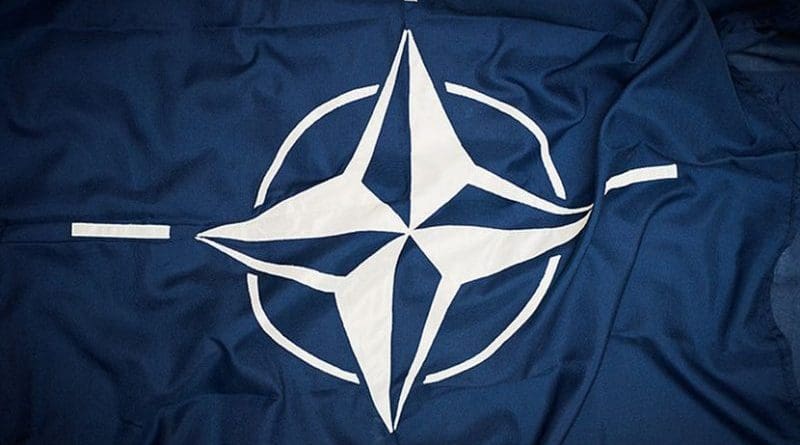NATO In Pakistan’s Neighborhood – OpEd
By Komal Khan
The international environment is witnessing strategic international competition for restructuring the international order in a transitioning post-bipolar world; therefore, pushing the United States to reassure its former centrality primarily in the Euro-Atlantic and the Asian regions. This necessarily brings into front the NATO as a primary agency to emphasize the political component of the US led multilateral potential alliance to establish the transatlantic link; however, extending its operability beyond its traditionally allocated regional domains under cooperative security and crisis management mechanisms.
The NATO 2030 Report and the Strategic Concept 2022 outlines its fixation with China as an identified adversary and the military power having security implications, thereby constructing a new reality to which the alliance and the international order have to adapt to militarily. The United States is the basic stakeholder in reviewing the NATO agenda for European allies as evidenced in the Trump administration’s anti-China drive in NATO since 2017. The driving factors have been Europe’s growing obsession with strategic autonomy and speculations regarding European defense and the credibility of the NATO. Moreover, China’s infiltration into European affairs has also been proven by its occupation of the US-EU dialogue in technology and bilateral trade.
To meet the purpose, the Strategic Concept 2022 provides for a 360-degree approach implemented via partnerships in the North, the South, and the East. In this regard, after the London Summit in 2019, Secretary General of NATO, Stoltenberg initiated the NATO 2030 process to reflect on NATO’s political dimensions in adaptation to the international competitive environment; wherein the themes in seminars focused on ‘deterrence, defence, foreseen challenges of advanced technology, rule-based order, international stability and partnerships and the Russia and China were declared as challenging powers.
The US withdrawal from Afghanistan in the Kabul fall would admittedly impact NATO’s capacity and future strategy for its overseas intervention beyond NATO premises. NATO’s shift to partnerships strategy indicates the NATO’s intention to fill in the emerging partners as policing states for the United States in the East, including India specifically in the Indian Ocean Region. For instance, the Madrid Summit held on June 27-30 included Japan and Australia as the first-time attendees. NATO extension in Asian region has implications for the regional strategic stability in China’s neighbourhood, and unfavourably for Pakistan as well because strengthening India ultimately increases power imbalance in South Asia.
The interoperability mechanisms led by NATO in Asia Pacific include: First, the NATO partners’ inter-operability. In this, Britain and France have been extending their maritime presence in the Indo-Pacific. Second, NATO’s engagement with the non-NATO members: notably Australia, Japan, and South Korea. NATO-India interoperability is significant with respect to Pakistan’s regional security. India already partnered with NATO in the Shared Awareness and Deconfliction (SHADE) counter-piracy operations off the coast of Somalia as part of naval extension policy.
The resurging drive for strengthening democracy and the cases of democratic erosion in Hong Kong, Ukraine, and Taiwan incorporate the US allies and partners particularly Japan, Australia, South Korea, and India as non-NATO partners in international security and order preservation. Notably, the precedent has been set by incorporating Pakistan as non-NATO ally in restoring democracy in Afghanistan. Hence, the possibility of India’s incorporation in the NATO’s multilateral operations is inevitable, significantly, when India has already been assigned key role in containment of China in the Indian Ocean and Asia Pacific region.
In 1999, Samuel Huntington in the ’The Clash of Civilisations’ derives the relationship between conjunctural events occurring in the international politics and the consequent structural changes incorporated in the US foreign policy while maintaining the core continuity, simultaneously, and that is security of the national interest. From Clinton’s administration to Biden’s foreign policy, stable coalitions, multilateralism, and consensus building have been coherent policies; however, Biden is considering the crisis management strategy through multilateral coalitions as viable option for promoting the US interests.
Therefore, the NATO’s Strategic Concept 2022 in the context of China containment policies may be taken as a reflection of the Biden’s Indo-Pacific Strategy 2022 which nominates India as a credible partner, a militarily advanced policing state, a naval power and an economic market for the transatlantic community in Asia.
*The writer is working as a Research Officer at the Strategic Vision Institute (SVI), a non-partisan think-tank based out of Islamabad, Pakistan.*


What is matter with these kids from Pak–did these kids working as agents of China?
And forgot their own civilizational leadership, being a part of India for millions of years?